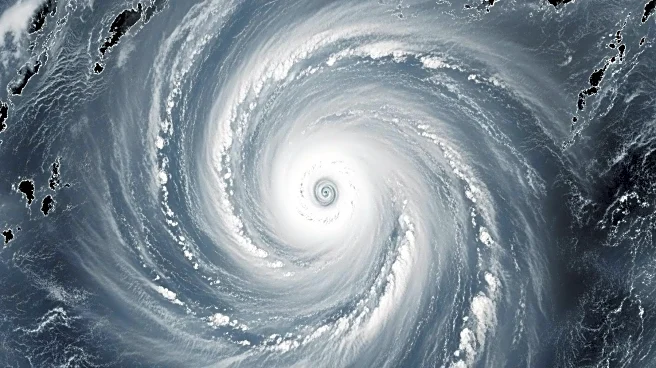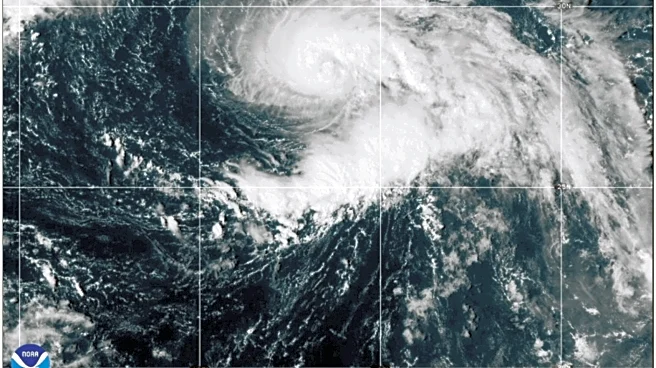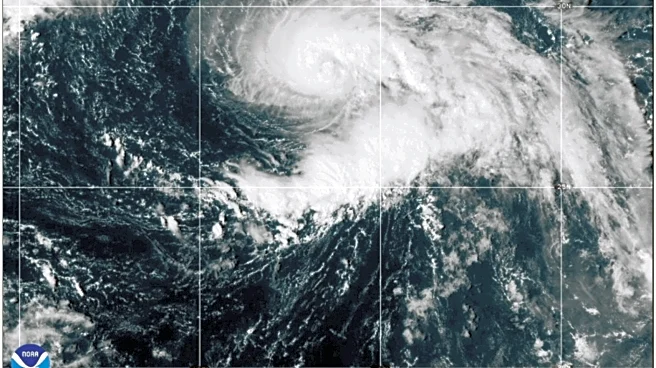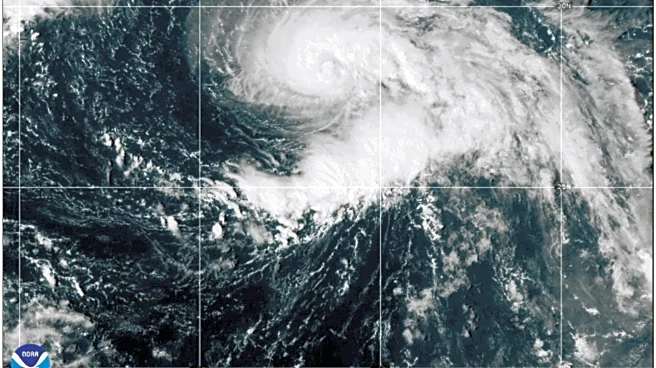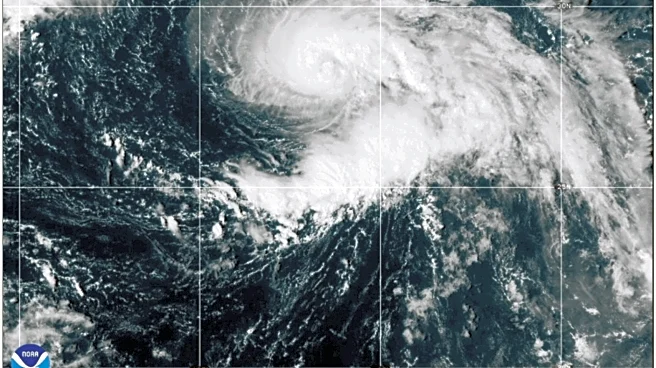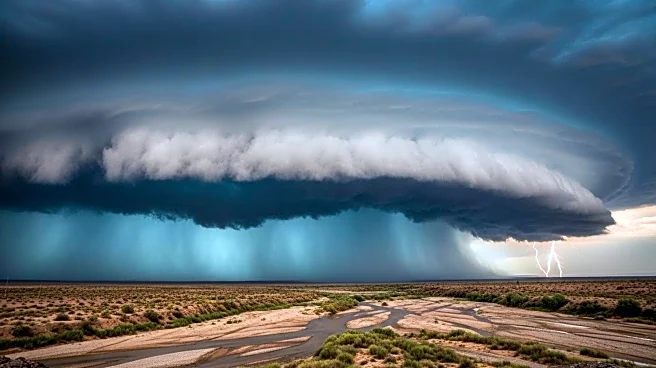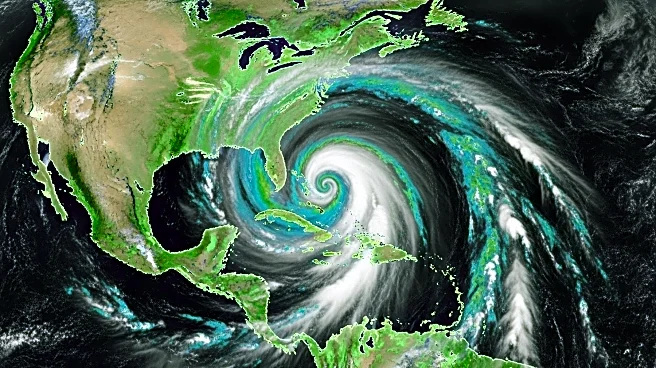What is the story about?
What's Happening?
Hurricane Gabrielle has formed in the central Atlantic Ocean, strengthening from a tropical storm on Sunday afternoon. The National Hurricane Center reports that Gabrielle is currently a Category 1 hurricane with winds reaching 75 miles per hour, located approximately 320 miles southeast of Bermuda. The storm is moving north-northwest at 10 mph and is expected to pass east of Bermuda on Monday. While the likelihood of significant impacts on Bermuda is decreasing, the hurricane center advises residents to stay informed as some wind and rainfall effects are still possible. Gabrielle is forecasted to intensify further, potentially becoming a major hurricane early in the week before weakening as it moves across the North Atlantic.
Why It's Important?
The intensification of Hurricane Gabrielle highlights the ongoing challenges posed by severe weather events, particularly in the context of climate change. The potential for Gabrielle to become a major hurricane underscores the increasing frequency and intensity of such storms, which can have significant economic and social impacts. Coastal areas, including Bermuda and parts of the U.S. East Coast, may experience hazardous conditions such as strong winds and high swells. The situation necessitates preparedness and monitoring by local authorities and residents to mitigate potential damage and ensure safety.
What's Next?
As Gabrielle continues to intensify, the National Hurricane Center will provide ongoing updates and advisories. Residents in Bermuda and along the U.S. East Coast are advised to monitor the storm's progress and heed any warnings or instructions from local authorities. The storm's path and intensity will be closely watched to assess any changes in potential impacts. Emergency services and disaster response teams may need to prepare for possible interventions if the storm's effects become more severe.
AI Generated Content
Do you find this article useful?
